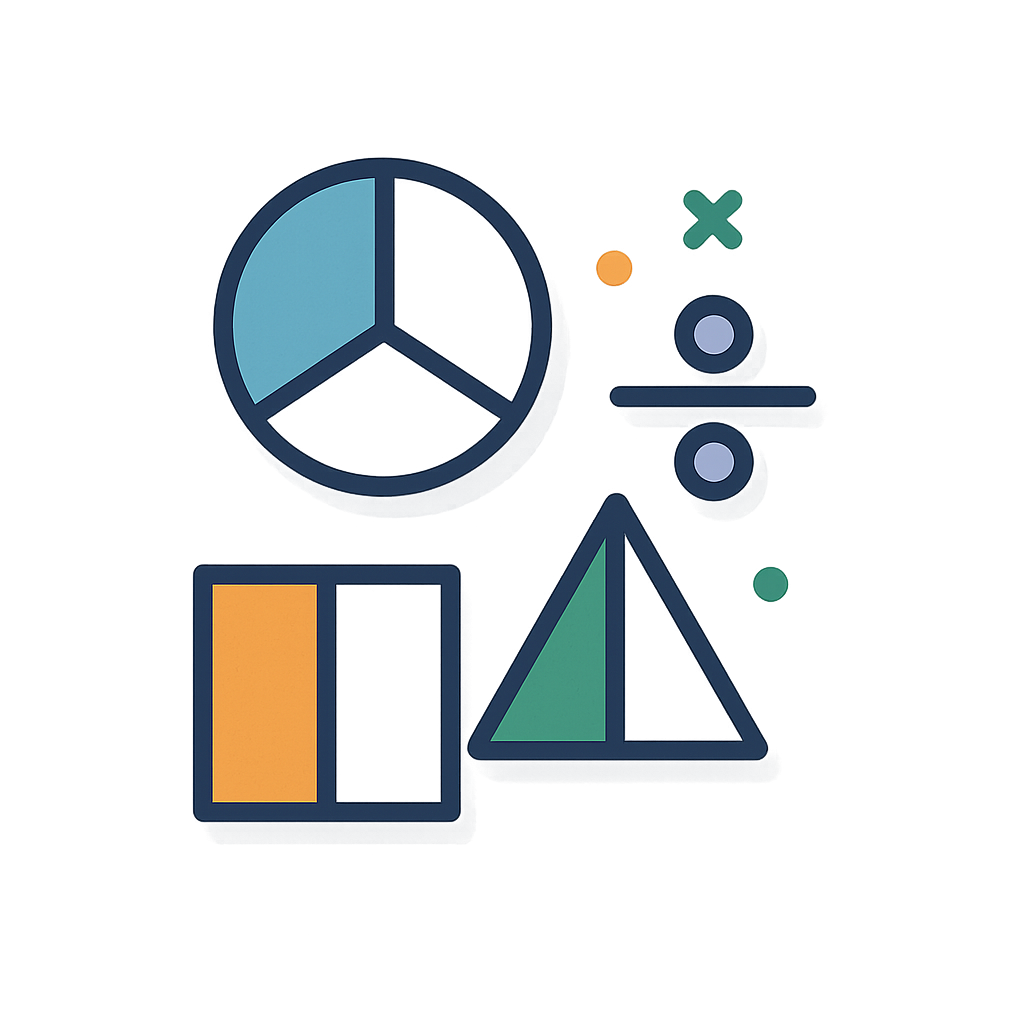A Story of a Piece of the Whole
Have you ever shared a giant, cheesy pizza with your friends? Think about that moment when you have to figure out how to give everyone a slice. Or what about splitting a chocolate bar with your brother or sister, making sure both pieces are the same size? That feeling of fairness, of making sure everything is divided just right, is where I live. I am the idea that helps you break something big into smaller, equal parts. Sometimes I am one-half, when you share with one other person. Sometimes I am one-third, or one-fourth, or even one-eighth if you have lots of friends who want pizza. I don’t have a body or a voice, but I am there in every slice, every share, and every single piece of a whole thing. I am a secret helper, a silent tool that brings order and equality to the world, one piece at a time. Before you even knew my name, you used me to make sure you got your fair share of dessert. I am a puzzle and a solution, all wrapped into one simple, powerful idea.
That amazing idea of fairness? That’s me, Fractions. Hello. It’s so nice to finally introduce myself. I’ve been around for a very, very long time, helping people solve tricky problems. Let’s travel back in time together, way back to ancient Egypt over three thousand years ago. Imagine a huge river called the Nile. Every single year, it would flood its banks, washing away all the markers that showed which farmer owned which piece of land. What a mess. When the water went down, the farmers would call on me. They used ropes and measuring sticks to divide the land back into equal parts, making sure every family got their fair share. I was essential. A few years later, I helped those same clever Egyptians build the giant pyramids. Can you imagine trying to build something so enormous without being able to measure things perfectly? The builders used me to make sure every stone block was the right size, and that the sloping sides were all exactly the same. They needed to measure things in parts of a whole, not just whole numbers. For a long time, I was written in many different ways, which could be confusing. But then, in the 12th century, a brilliant Arab mathematician named Al-Hassar came along. He gave me the look I have today, with one number sitting neatly on top of another, separated by a little line. He made me simple and elegant, so everyone could write and understand me easily.
Even though my story started thousands of years ago, I am more important today than ever. You find me everywhere you look. I’m in the kitchen with you when you follow a recipe for delicious cookies. The recipe might say, “Add one-half cup of sugar” or “three-quarters of a teaspoon of vanilla.” Without me, your cookies might be a disaster. I am also on the clock, helping you tell time. When someone says, “It’s a quarter past three,” they are using me. They mean that one-quarter of an hour has passed since three o’clock. Are you a fan of music? Well, I’m there too. I tell musicians how long to hold a note—a whole note, a half-note, or a quarter-note. I create the rhythm that makes you want to dance. I may seem like just a bunch of little pieces, but I show you the beauty in parts. I help you see how all those small, different pieces come together to make our wonderful, whole world. From a slice of pie to the beat of a song, I am there, helping everything make perfect sense.
Reading Comprehension Questions
Click to see answer
